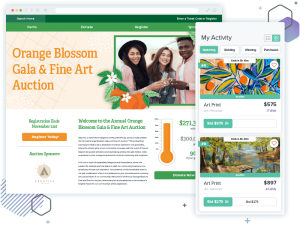Weird, obscure metrics are fun… at least for me. And my latest favorite weird, obscure metric is a nonprofit’s dependency quotient, because 1) it’s something I’d never heard of until recently and 2) it’s an immensely helpful piece of data to have at your fingertips.
What the heck is a dependency quotient?
Your dependency quotient measures how much you rely on your top donors. It doesn’t sound that cool, but it’s an interesting metric! It helps you identify if you depend too heavily on your biggest donors, which is a great indicator of fundraising effectiveness and overall financial health.
How do I find my dependency quotient?
This is an easy calculation! Find the total amount your top 3-5 fundraisers donate, then divide it by your organization’s total expenditures.
Annual donations from top donors / Total annual expenditures = Dependency quotient
So, if my organization’s top 4 donors give ~$350,000 annually and my expenditures are ~$1 million annually, my dependency quotient is 35%.
Why do I need to understand my dependency quotient?
Understanding your dependency quotient is so useful! It’ll help you plan expenditures, understand strengths and weaknesses, prioritize fundraising efforts, and more.
Here’s how.
We’ve already established that my organization’s dependency quotient is 35%. If my top 4 donors stop giving, my nonprofit will have to make up 35% of our budget. That’s a lot!
With that dependency quotient, I’d focus our efforts on diversifying our donor base. We’d look into attracting more donors, upgrading existing donors, and building a base of recurring donors. We would also, of course, spend time reinforcing our relationships with our major donors.
The goal of all of this would be to drive down our dependency quotient. The higher the dependency quotient, the more heavily you rely on your major donors… and the harder you’ll have to work to make up for lost revenue if you lose them.
So now what do I do?
Once you understand your dependency quotient, you’ll have a good idea of how to proceed.
Do you have a high dependency quotient?
It’s time to start diversifying! The #1 way to do that is to attract new donors and solidify relationships with new ones. But, to do that, you need to understand what motivates them to be involved with you at all! Here are some helpful strategies you can use to get a grasp on what messages resonate with both future and existing donors.
Do you have a low dependency quotient?
Good for you! This means you aren’t relying too heavily on your major donors and have a varied, active donor base. You’ve also got plenty of room to build relationships with existing major donors or cultivate new ones. This blog article breaks down how to find new potential major donors and cultivate relationships with existing ones.
Do you want to build better relationships with your major donors?
Regardless of your dependency quotient, you’ll always want to stay close to your major donors and work on finding new ones. But you needn’t do so alone! Believe it or not, your board members may be a huge, untapped asset in the major gifts fundraising process. Take a peek at this article to figure out why.
Do you want to focus on improving your overall fundraising?
High dependency quotient or not, it’s always a good idea to focus on improving and streamlining your fundraising. Retaining donors is financially more efficient than finding new ones, and long-engaged donors are much more likely to become major donors in the future. If you’re interested in learning more about donor retention, sign up for this email series we put together about donor retention methods and strategies.
Conclusion
It’s very valuable to focus on metrics like donor retention, the amount you spend on fundraising efforts vs. what you bring in, and other important data points (like these 8 stats you should definitely track). But your dependency quotient is an important number to know! Understanding your dependency quotient will guide you as you decide how to target your fundraising efforts and build relationships with your donors.



